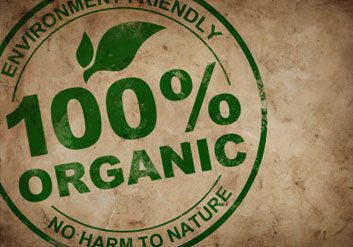
Are all fruits and veggies equally healthy?
“Very little data about the pesticide loading of fruits and vegetables in Canada has been published,” says Andrew Hammermesiter, director of the Organic Agriculture Centre of Canada. However, he says “the Canadian Food Inspection Agency did conduct an assessment of Canadian Fruits and Vegetables in 2009-2010.”
While most of the fruits and vegetables tested fell under provincial regulations, roughly 25 to 50 percent of them still contained detectable levels of pesticides.
Less than one percent of the fruits and vegetables tested exceeded Maximum Residue Limits. However, as Hammermeister explains, the point of organic agriculture is to avoid the risk entirely.
“In organic agriculture, we take a precautionary approach,” he says. “Which means that we avoid using a practice that could intuitively be deemed to be a risk even if scientific evidence does not or cannot validate the risk.”
Want to reduce your risk too? Here are the most important fruits and veggies to buy organic.
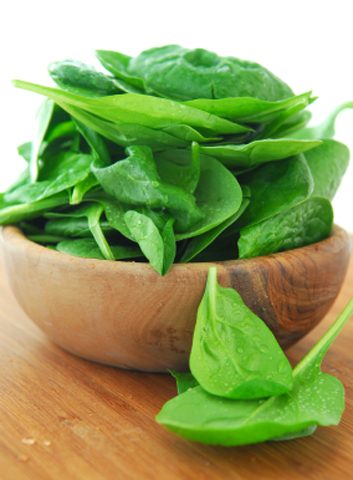
Leafy greens
In the Canadian Food Inspection Agency’s study, 11 samples of fruits and vegetables contained pesticide residues in violation of Maximum Residue Limits. Seven of those 11 violations occurred in leafy greens.
Spinach and lettuce also made the ‘dirty dozen’ list of U.S. non-profit Environmental Working Group‘s (EWG) annual Shopper’s Guide to Pesticides in Produce. The group ranks fruits and vegetables by their likelihood of being consistently contaminated with the greatest number of pesticides at the highest levels, including both domestic (to the U.S.) and imported produce. Results of their tests are based on examination of pesticide residue testing data from the US Department of Agriculture and the Food and Drug Administration.
This year, EWG also included Kale and Collard greens on the naughty list, because, according to their website “they were commonly contaminated with highly toxic organophosphate insecticides.”
According to the Pesticide Action Network (an international coalition of around 600 NGOs, citizens’ groups, and individuals in about 60 countries) organophosphates are some of the most common, and most toxic insecticides used today, adversely affecting the human nervous system even at low levels of exposure.
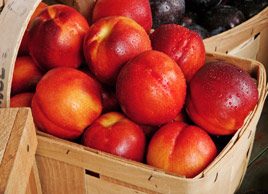
Nectarines
This convenient snack is the number one most-contaminated fruit on EWG’s dirty dozen list. Why? Because every sample of imported nectarines tested positive for pesticides. Scarier still, the average imported nectarine had a much higher total weight of pesticides than any other food crop. Organophosphate insecticides were also detected on nectarines.
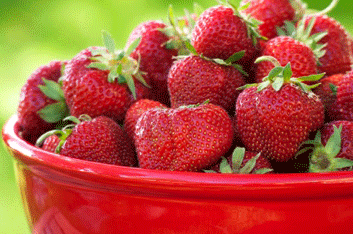
Berries and Grapes
Three samples of small berries in the Canadian Food Inspection Agency study contained pesticide residues in violation of safe limits. Strawberries and blueberries are also on the EWG’s dirty dozen list as they both had 13 different pesticides detected on a single sample, while grapes had more types of pesticides than any other produce.
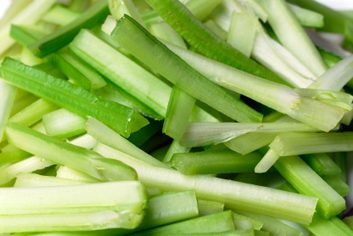
Celery and cucumbers
According to the Pesticide Action Network’s website, “all the fruits and vegetables on the Dirty Dozen list are things we tend to eat whole – skin and all – so any pesticides not washed off will go right down the hatch.” That rings true for celery and cucumbers, both of which are on the dirty dozen list. 96 percent of celery samples in EWG’s study tested positive for pesticides and a single sample of celery was contaminated with 15 different pesticides. Cucumbers had 81 different pesticide residues.
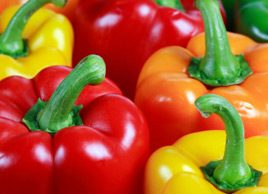
Bell peppers and potatoes
In EWG’s study, a single bell pepper sample was contaminated with 15 different pesticides, while 91 percent of potato samples tested positive for pesticides. There were also organophosphate insecticides detected on bell peppers.
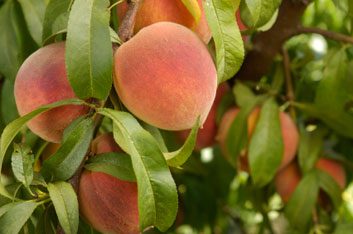
Peaches and apples
Peaches and apples are two of the most contaminated fruits on the dirty dozen list. Almost every sample of apples (98 percent) in the EWG study tested positive for pesticides.
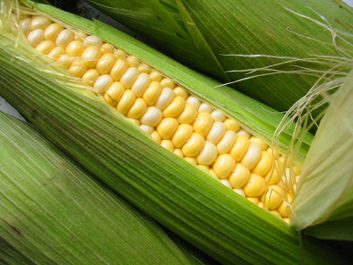
The cleanest fruits and veggies
“In the case of pesticides, there is historical cause to have concern about their impacts on the environment and plants and animals, and their presence in food,” Hammermeiser says.
That being said, it’s still better to eat conventional fruits and veggies than no fruits and veggies at all. According to the Environmental Working Group’s website, “The health benefits of a diet rich in fruits and vegetables outweigh the risks of pesticide exposure.”
If you don’t want (or can’t afford) to buy organic, add these fruits and veggies from EWG’s ‘clean’ list to your shopping cart. They are the least likely to be contaminated with pesticides: Onions, sweet corn, pineapples, avocado, cabbage, sweet peas, asparagus, mangoes, eggplants, kiwi, sweet potatoes, grapefruit, watermelon, mushrooms.
Too much info to take in? Download EWG’s printable guide, or add their app on your phone, here.
Related:
• 5 foods worth buying organic
• What’s your organic foods IQ?
• 5 ways to go organic on a budget
